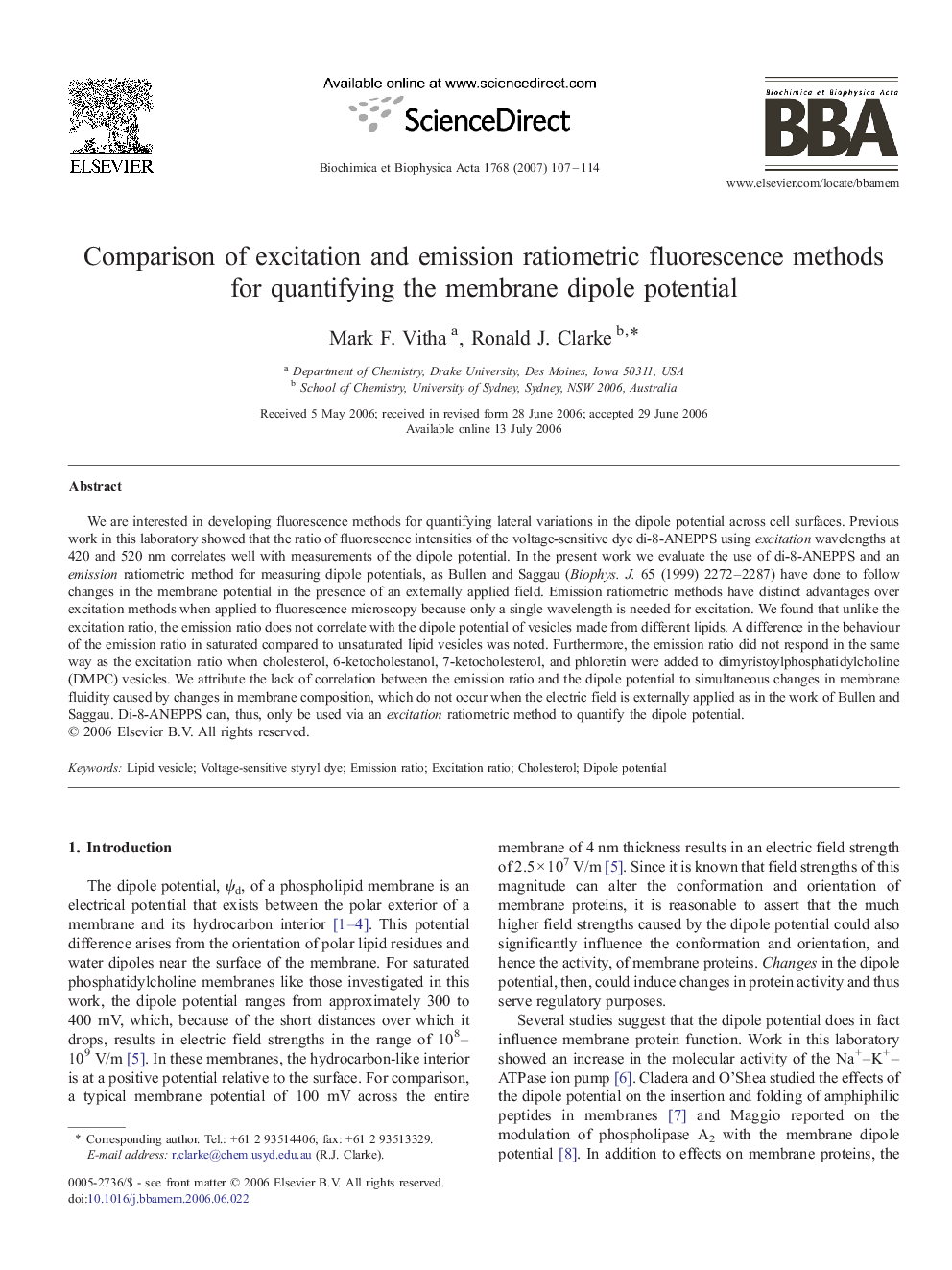| Article ID | Journal | Published Year | Pages | File Type |
|---|---|---|---|---|
| 1945931 | Biochimica et Biophysica Acta (BBA) - Biomembranes | 2007 | 8 Pages |
We are interested in developing fluorescence methods for quantifying lateral variations in the dipole potential across cell surfaces. Previous work in this laboratory showed that the ratio of fluorescence intensities of the voltage-sensitive dye di-8-ANEPPS using excitation wavelengths at 420 and 520 nm correlates well with measurements of the dipole potential. In the present work we evaluate the use of di-8-ANEPPS and an emission ratiometric method for measuring dipole potentials, as Bullen and Saggau (Biophys. J. 65 (1999) 2272–2287) have done to follow changes in the membrane potential in the presence of an externally applied field. Emission ratiometric methods have distinct advantages over excitation methods when applied to fluorescence microscopy because only a single wavelength is needed for excitation. We found that unlike the excitation ratio, the emission ratio does not correlate with the dipole potential of vesicles made from different lipids. A difference in the behaviour of the emission ratio in saturated compared to unsaturated lipid vesicles was noted. Furthermore, the emission ratio did not respond in the same way as the excitation ratio when cholesterol, 6-ketocholestanol, 7-ketocholesterol, and phloretin were added to dimyristoylphosphatidylcholine (DMPC) vesicles. We attribute the lack of correlation between the emission ratio and the dipole potential to simultaneous changes in membrane fluidity caused by changes in membrane composition, which do not occur when the electric field is externally applied as in the work of Bullen and Saggau. Di-8-ANEPPS can, thus, only be used via an excitation ratiometric method to quantify the dipole potential.
